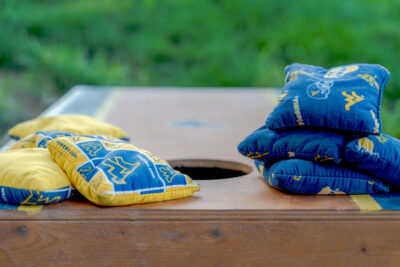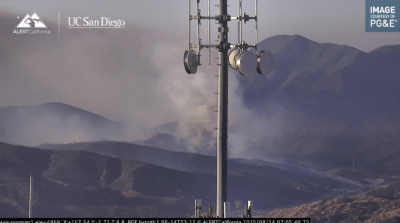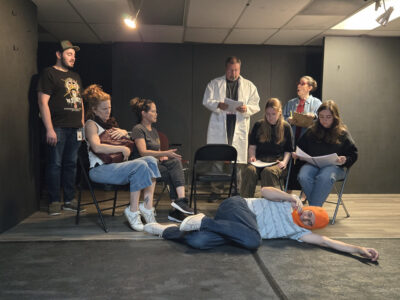College of the Canyons’ spring Star Party kicked off with booths lined up with various STEM activities, a planetarium, telescopes to see the sky and a keynote by COC astronomy professor Michaela Blain on exoplanets Friday at the Canyon Country campus.
The free event had all ages in attendance, ranging from students to adults to families.
Rod Gerard, a volunteer who brought his telescope – Celestron NexStar Evolution 9.25 — has been coming to the Star Party for about four or five years.

His telescope is for deep space objects like galaxies and nebulas, according to Gerard.
Gerard said he always had an interest in astronomy but when he finished high school, he went straight to Chouinard Art Institute (now known as California Institute of the Arts).
However, things changed after Gerard’s 2-S deferment did not hold up during the Vietnam War.
“Somebody told me, ‘If you’re going to be drafted, you’re better off joining the Air Force,’ that’s where I started learning electronics, and then I just got into the technical electronic stuff after that,” Gerard said.
But Gerard said that he only began to enjoy telescopes 10 years ago.
COC’s Society of Physics and Engineering Students Club had a booth that gave attendees the opportunity to play with a tensile test.
“What we have here is a small project that we want to send to the stratosphere to collect microorganisms at the troposphere and also compare that to the samples we get at the stratosphere. The samples in the stratosphere are relatively low, so we’re lucky if we get even like one sample,” said Dante Cross, a mechanical engineer student at COC.
They had three different materials to test to see if they were brittle or ductile, according to Cross.

Cross said by turning the knob (on the tensile machine), it will stretch the material and if that material broke quickly – it was brittle. But if the material stretched before snapping, the material was more ductile.
Inside the Takeda Science Center, astronomy professor Michaela Blain gave a keynote presentation about exoplanets.
Exoplanets are any planet that’s not in the solar system, according to Blain.

“Essentially, I kind of went through a very brief version of what exoplanet science has been, is today, and probably will be in the next decade or so. The field itself is only 30 years old. We found the first exoplanet in the 1990s. So, it’s a very new branch of astronomy,” Blain said.
Blain’s presentation explored the overview of exoplanets and how they started, how they are detected and what people are learning today about them.
Blain said she loves the event because all different people come and can ask questions about the different sciences and other fields related to science, technology, engineering and math.
“It’s fun to have an event where kids can come and ask their kid-level questions and then other faculty can come and ask their faculty, other science faculty level questions and everyone in between,” Blain said.
Star Party happens every school semester with one in the fall and one in the spring, according to Blain.











